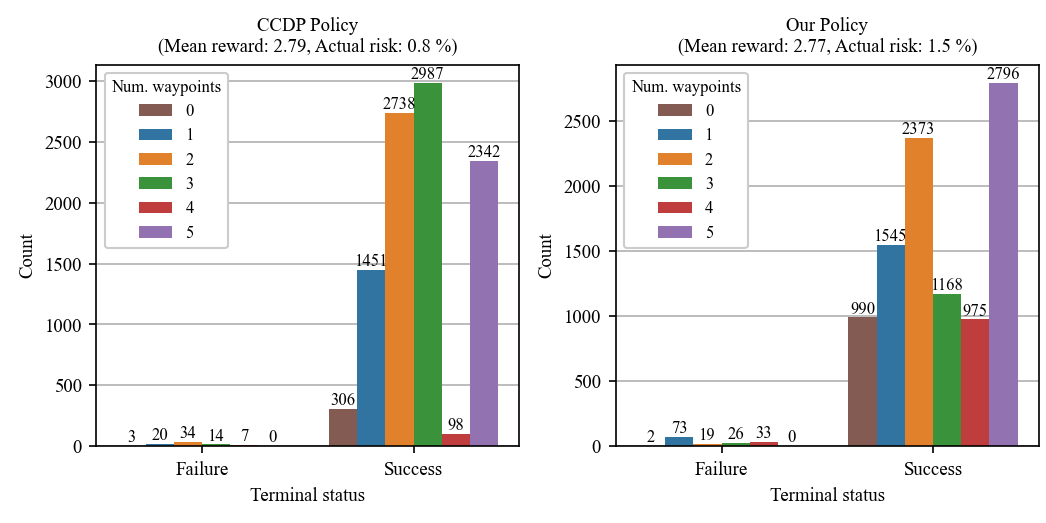Safe Mission-Level Path Planning for Exploration of Lunar Shadowed Regions by a Solar-Powered Rover
Olivier Lamarre, Shantanu Malhotra, Jonathan Kelly
Article accepted in the 2024 IEEE Aerospace Conference
Overview

Supplementary material
Distribution of Monte-Carlo trials between our approach and the CCDP algorithm

Traverse trials for the medium-scale traverse generated with our proposed algorithm
5 waypoints visited, no fault, safe region reached:
5 waypoints visited, 1 fault, safe region reached:
3 waypoints visited, 2 faults, safe region reached:
1 waypoint visited, 4 faults, safe region reached:
1 waypoint visited, 2 faults, mission failure:
Traverse trials near the LCROSS impact site
2 waypoints visited, six faults, safe region reached:
1 waypoint visited, two faults, safe region reached:
2 waypoints visited, six faults, mission failure:
Citation
@unpublished{lamarre2024safe,
author = {Olivier Lamarre and Shantanu Malhotra and Jonathan Kelly},
title = {Safe Mission-Level Path Planning for Exploration of Lunar Permanently Shadowed Regions by a Solar-Powered Rover},
note = {2024 IEEE Aerospace (accepted)},
year = {2024},
}